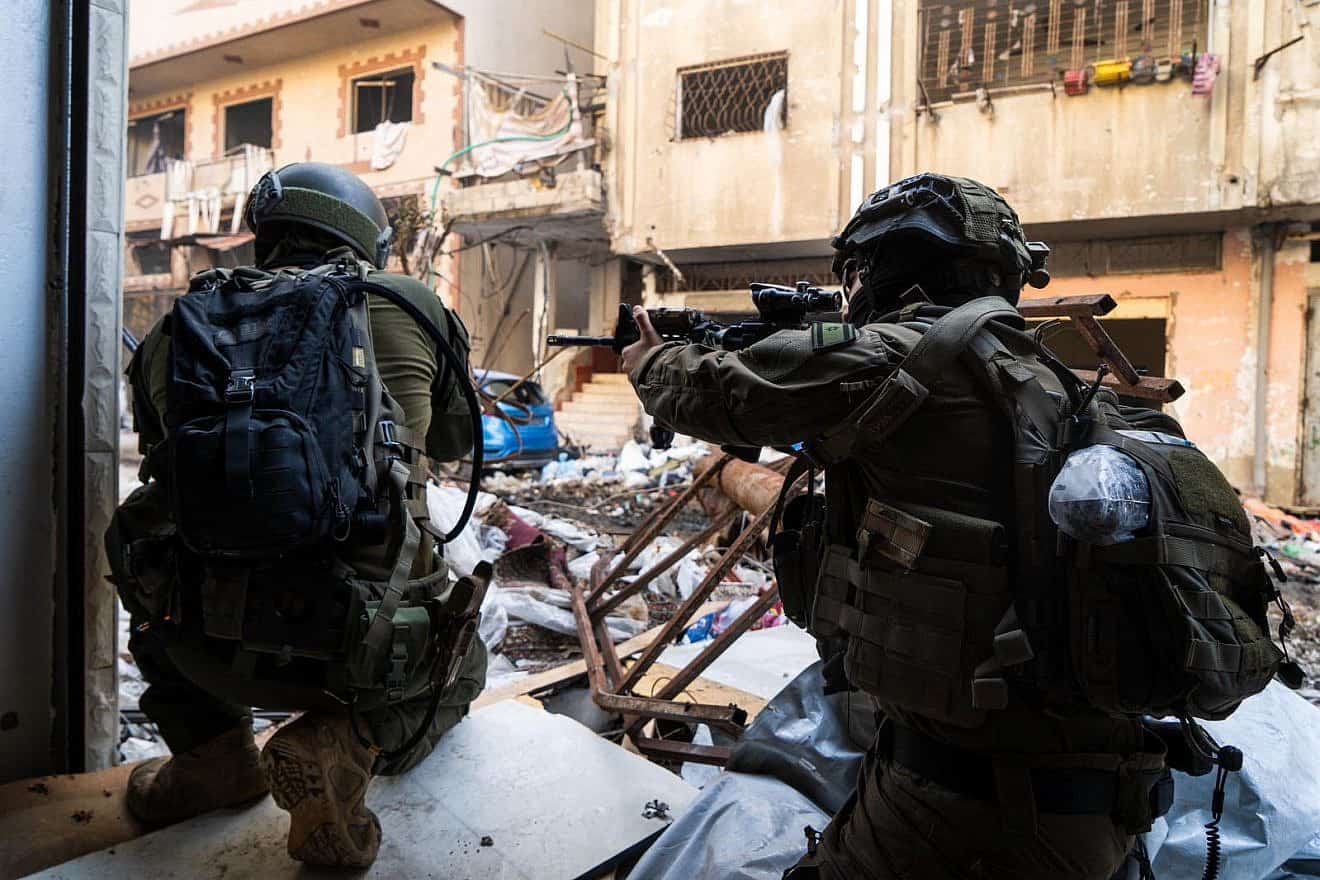“Israel Alone” was the headline on the cover of the March 23 issue of The Economist, a British weekly. The illustration shows an Israeli flag buffeted by a sandstorm.
I wonder if Yahya Sinwar, the Hamas leader in Gaza, is sitting in a tunnel under Rafah gazing at that image, and if it’s brought a smile to his lips.
Perhaps, when he was planning the Oct. 7 invasion of Israel, one of his deputies advised that their fighters target only soldiers and spare Israeli civilians, at least children and babies; that they not rape women and mutilate corpses; that they conduct themselves, in short, as honorable warriors rather than barbarians.
And perhaps Sinwar replied: “No. The United Nations, the Red Cross, most diplomats and much of the media will support us—no matter what we do.
“When the Israelis counterattack, we will hide underground, shielded by hostages. Above us, the body count will mount. There will soon be demands for a ‘ceasefire.’ We’re fighting Jews—support for them will not last long.”
Indeed, less than two weeks after Hamas’s invasion, Brazil put a ceasefire resolution before the U.N. Security Council. The Biden administration vetoed it, explaining that it would “leave Hamas in place, able to regroup and repeat what it did on Oct. 7.”
A second resolution was proposed by U.N. Secretary General Antonio Guterres himself in December. Again, the United States vetoed it.
A third resolution came from Algeria in February. U.S. Ambassador to the U.N. Linda Thomas-Greenfield said it would extend “the fighting between Hamas and Israel,” “the hostages’ time in captivity” and “the dire humanitarian crisis Palestinians are facing in Gaza.” She vetoed it.
Last Friday, Washington offered its own resolution, calling for “diplomatic efforts” to secure a ceasefire “in connection with the release of all remaining hostages”—134, with roughly 100 believed still alive, including five Americans. It also condemned Houthi attacks on shipping.
That language was tough enough on Israel to win 11 of Security Council’s 15 votes. But Moscow and Beijing vetoed it, for which Hamas expressed its “appreciation.”
No doubt Iran’s rulers were appreciative, too. Hamas is their client, as are the Houthis. And Tehran, whose intentions toward Israel are openly genocidal, has become Moscow and Beijing’s strategic partner in a strengthening anti-American axis.
Another resolution, backed by Moscow, Beijing and 22 Arab countries, was put forward on Monday. It called for a ceasefire until April 9, the end of Ramadan, “leading to a lasting sustainable ceasefire,” and the release of the hostages.
But it didn’t make the ceasefire contingent on the hostages’ release. Nor did it condemn Hamas. Indeed, it didn’t even mention Hamas or the Oct. 7 massacre. This time, the United States abstained, allowing the resolution’s passage—which Hamas welcomed.
I expect that, following the conclusion of Ramadan, the hostages will still be in chains and the Israel Defense Forces will proceed with what could be the last major battle of the war.
President Biden has said Hamas shouldn’t be left with a “safe haven anywhere in the Gaza Strip.” But he’s also said he doesn’t believe achieving that requires a “major ground operation.”
“The key goals Israel wants to achieve in Rafah can be done by other means,” National Security Advisor Jake Sullivan asserted last week, without elaboration. Military experts I’ve spoken with are skeptical.
The Israel Defense Forces estimates that there are up to 8,000 Hamas fighters in Rafah. In addition to defeating them, the Israelis need to shut the tunnels between Gaza and Egypt through which Tehran supplies Hamas with an enormous quantity of weapons and ammunition.
The Israelis have agreed to provide “humanitarian enclaves” for non-combatants away from the battlegrounds.
Of course, if Sinwar were to release his hostages and lay down his arms, no one else would be killed. That needs to be said repeatedly and emphatically.
Israeli Prime Minister Benjamin Netanyahu called the U.S. abstention a “retreat” that suggests moral equivalence between Hamas and Israel. He canceled a visit of Israeli officials to Washington, where Sullivan and his colleagues were to suggest specific “other means” that could lead to Hamas’s defeat with fewer non-combatant casualties.
In the final analysis, Israelis are unlikely to be persuaded to let Sinwar emerge from the tunnels, one hand holding a weapon, the other flashing a V sign.
Perhaps he’d then whisper to his deputy: “Now do you understand? We don’t obey the infidels’ rules. We make the Jews bleed, and then the infidels obey our rules.”
There’s one flaw in this reasoning. In 1967, when all the Arab states surrounding Israel were mounting what they expected would be an annihilationist war, President Lyndon Johnson told the Israelis to hold their fire. Rejecting that advice, the Israelis fought and won what became known as the Six-Day War.
In 1981, President Ronald Reagan advised the Israelis not to bomb a nuclear reactor in Iraq, and in 2007, President George W. Bush advised the Israelis not to bomb a nuclear reactor in Syria. In those instances, too, the Israelis did what was necessary—as anyone with a shred of strategic sense now knows.
“Better to stand alone than to live at the mercy of others,” Rachel Gur, an Israeli attorney—and, more importantly, a mother of four—noted above an image of The Economist’s cover appearing on X last week.
“We are the first Jews in 2,000 years who refuse to die quietly. We will continue to stand, to prosper and thrive. We have survived exile, the inquisition, crusades, pogroms and the Holocaust. We will prevail.”
If Sinwar saw her comment on his laptop in the tunnels beneath Rafah last week, I don’t imagine it brought a smile to his lips.


























